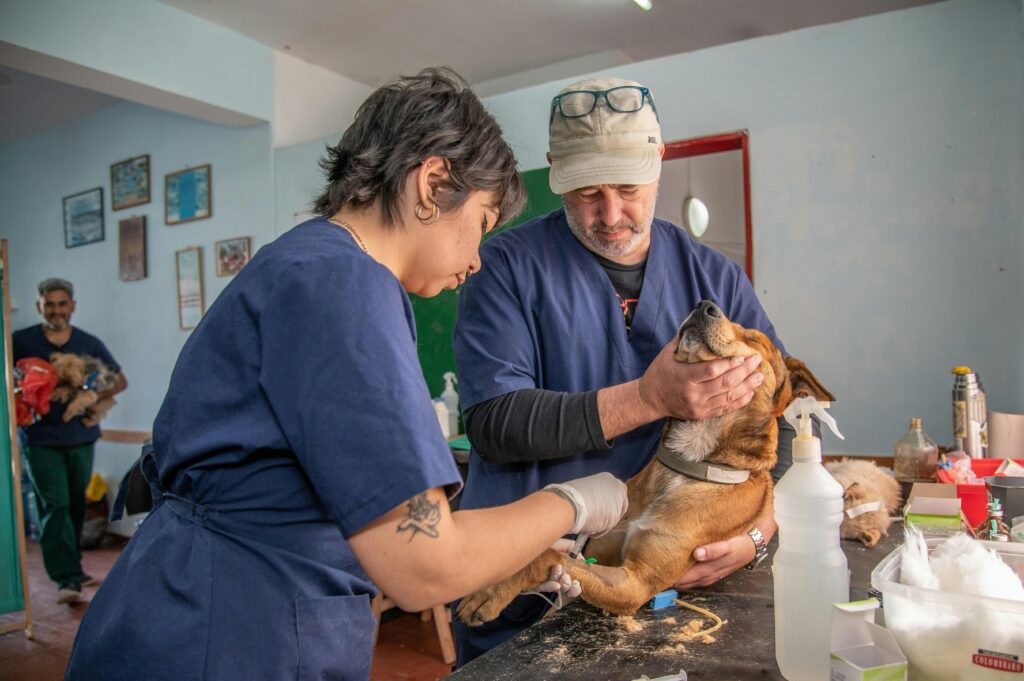Why Animal Shelters Need Volunteers
Animal shelters run on tight margins—not just financially, but physically and emotionally. Most are juggling overflow populations with skeleton crews. Kennels fill faster than rescue vans can unload, and there’s always another call coming in. Dogs need walking, cats need socialization, and there’s no pause button.
Staff are doing their best, but there are limits. That’s where volunteers come in. Whether it’s polishing food bowls, folding blankets, or spending 30 minutes with a nervous mutt that just lost its home—every bit matters.
One more set of hands can mean a cleaner cage, a calmer animal, or a staff member freed up to handle an emergency intake. Volunteers don’t just lighten the load. Very often, they make the difference between a stressful day and one where the whole operation actually breathes. That’s not exaggerated—it’s the daily reality in most shelters.
What Volunteers Actually Do
Shelter work isn’t glamorous—but it’s essential. Volunteers handle core tasks that keep the operation running. Walking dogs, cleaning kennels, refreshing bedding, and sticking to feeding schedules—it’s hands-on, gritty, and needed every single day. These daily actions help maintain a clean, safe environment so stressed animals have a real shot at recovery and adoption.
Then there’s the emotional labor: socializing shy or anxious animals. Spending a few extra minutes with a timid cat or skittish pup can be the difference between overlooked and adoptable. Volunteers help animals build confidence, which shortens their shelter stay.
It’s not all front-line work, either. Admin support, manning adoption events, stuffing newsletters, planning fundraisers—these behind-the-scenes roles are just as important. Every skill set has a place, whether you’re handy with spreadsheets or just good at making people feel welcome.
The key is matching what you’re good at—and what you enjoy doing—with what the shelter actually needs. Think less about a “dream role” and more about where you can create real value. Because when you’re aligned with their needs, every minute you give counts twice.
Real Impact: Every Hour Counts
At animal shelters, time is currency. One volunteer walking a few dogs after work might not sound like much—but multiply that across weeks, months, and more volunteers, and the picture changes fast. Those quick outings, light cleaning shifts, or even fifteen-minute play sessions reduce stress levels in shelter animals, making them calmer, more sociable, and noticeably more adoptable.
When animals are less anxious, they show better in front of potential adopters. A relaxed dog wagging its tail or a confident cat rubbing against the bars of its kennel? That sticks. Volunteers help make those moments possible. By showing up consistently—even just a little—they help keep the routine steady and emotional well-being in check.
And yes, small actions directly fuel big wins. Like the group of teens who started visiting a local shelter weekly to socialize harder-to-place dogs. Within a few months, nearly every one of those dogs had found a home. It didn’t take a grand campaign—just time, patience, and presence.
Want more of these stories? Check out Heartwarming Pet Adoption Stories That Will Inspire You.
Getting Started
Before anything else, you’ll need to find a shelter that’s a good fit. Sites like VolunteerMatch, Petfinder, or local municipal pages are solid places to start. Many shelters also post openings directly on their websites or social feeds, so it’s worth checking those out, too. Pro tip: look for organizations with clear volunteer guidelines and a track record of solid public reviews.
Once you find a match, be ready for orientation. Most shelters require new volunteers to go through a basic training session. It’s usually short—an hour or two—and covers rules of the facility, safety protocols, and what your role includes. Don’t expect to jump into hands-on animal care your first day. Shelters take it slow for a reason: they want both you and the animals to feel safe.
As for requirements, the fine print matters. Most shelters set a minimum age (often 16 or 18). Time commitment ranges vary—some are cool with a few hours a month, others want more regular involvement. The key is consistency. If you’re reliable, even with limited time, you’ll be more valuable than someone who burns out after two weekends.
Beyond the Shelter Walls
Volunteering doesn’t end when you leave the shelter parking lot. In fact, some of the most impactful efforts start at home—or out in the community.
Fostering is one of the highest-impact ways to volunteer. When you open your home to an animal, you’re giving shelters room to breathe and pets a real shot at healing. Sick kittens, stressed-out dogs, or animals too young for adoption all benefit from a calm, temporary place to land. If showing up to the shelter isn’t doable, fostering lets you make a difference on your own schedule.
Then there’s education and outreach. More people need to understand what shelters deal with and how they can help. Volunteers run school programs, attend adoption events, and lead workshops that show the public what animal welfare looks like up close. When people know more, they care more—and that’s when lasting change happens.
Finally, help isn’t always hands-on. Sharing adoptable pet posts, raising funds on your platform, or even running the shelter’s social media channels can be game-changing. Some shelters survive month-to-month—donations, logistics help, and online advocacy aren’t filler tasks. They’re the backbone of real impact.
Even if you can’t be there in person, you’re not out of the game. You’ve got tools, a voice, and maybe even a spare room. Use what you have. That’s how change keeps moving.
The Takeaway: Small Deeds, Major Difference
Volunteering at an animal shelter sounds simple—and it is—but the ripple effect is massive. One extra person cleaning a kennel, walking a dog, or calming a nervous cat adds up fast. It frees up staff, reduces stress in animals, and helps more pets get adopted. That kind of impact sticks.
But it’s not just about the animals. There’s something grounding about showing up regularly, doing physical work that matters, and being part of a team that cares. You build real connections—with people and pets—and you start to see your own growth in the process. More patience. More empathy. Maybe a little more grit.
Here’s the thing: you don’t need fancy skills, a ton of experience, or endless free time. A couple hours a month can mean the world to a shelter. So if you’ve been thinking about doing more, this is your sign. Because if you’ve got a few hours, you’ve already got what it takes.




